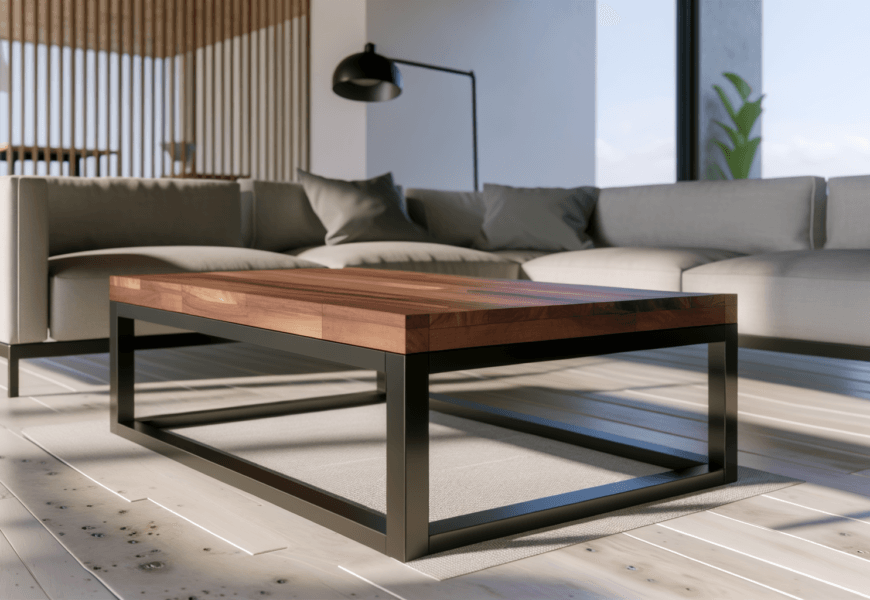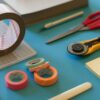Building your own coffee table in 2024 not only saves you money but also offers the creative liberty to design a unique focal point that perfectly ties into your living space. Whether you're a seasoned DIY enthusiast or a novice eager to embark on a practical home project, this comprehensive guide will steer you through the process with ease. From conceptualizing a design and gathering materials to the final customization touches, we'll help you craft a one-of-a-kind piece that adds character and functionality to your home.
Choosing the Right Design and Materials
Before you get started, it's essential to consider the design and materials that will work best for your situation. Think about the space where the coffee table will reside and your existing decor style. Are you aiming for a rustic look with reclaimed wood, or do you prefer a modern design with sleek metal and glass elements?
In 2024, popular coffee table designs are set to blend ergonomic function with stylish aesthetics. Look out for elements like geometric shapes, mixed materials, and innovative storage solutions, which are trending in the furniture design world. When selecting materials, prioritize durability and appearance; materials like oak, walnut, and tempered glass are timeless choices that offer longevity.
Gather your inspiration from trending styles on platforms like Pinterest or Instagram, or explore online furniture stores to identify patterns you admire. This step is critical in ensuring your DIY coffee table not only serves its functional purpose but also elevates your home's interior design.
Essential Tools and Equipment
Once you've settled on your design and materials, it's time to assemble your toolkit. A basic woodworking toolkit will suffice for most DIY projects and typically includes a tape measure, carpenter's square, hand saw, hammer, and screwdriver. However, to improve efficiency and precision, consider investing in or renting power tools such as a circular saw, jigsaw, and electric drill.
Safety is paramount when working with power tools, so equip yourself with safety goggles, ear protection, and gloves. A dust mask can also be a wise precaution, especially when sanding. Research local hardware stores or online marketplaces for tool rental options, especially if you’re looking to minimize upfront costs for one-time projects.
Step-by-Step Guide to Building Your Coffee Table
Preparing Your Workspace
Before cutting or assembling any materials, prepare a dedicated workspace. A clean, organized area with ample lighting and ventilation will enhance your safety and productivity. If working indoors, consider laying a drop cloth or protective sheet to catch dust and debris.
Cutting and Assembling the Frame
Begin by cutting your wood pieces according to your design’s dimensions. Use a miter saw for angled cuts, providing a precise fit that supports the table’s structure. Assemble the frame by aligning the pieces and securing them with wood glue and screws. As a tip, pre-drill the screw holes to prevent the wood from splitting.
Adding the Tabletop and Legs
Once the frame is secure, attach the tabletop. Ensure that it is evenly aligned and stable, as this will be the main surface. If your design includes legs, attach them next. Use sturdy brackets or corner blocks for additional support, ensuring the table remains level and balanced.
Securing and Stabilizing the Structure
Reinforce the joints and connections with metal brackets or wooden cleats, adding extra stability to your structure. Test the table for any wobble or unevenness and make necessary adjustments to maintain a sturdy build.
Finishing Touches and Customization
With the assembled table in front of you, the finishing touches are where your coffee table can truly come to life. Begin by sanding all surfaces to smooth any rough edges, utilizing a range of grit sizes for a fine finish. Consider applying a wood stain or paint for visual appeal; lighter stains can enhance the grain for a natural look, while bold paints can make a color statement.
Add personal flair with creative customization. Try stenciling patterns onto the tabletop, etching a personalized motif, or inlaying tile or glass for an eye-catching effect. Preserve your hard work with a coat of sealant, protecting the table from wear and tear while accentuating your chosen finish.
Troubleshooting Common Issues
Building a coffee table can come with challenges. Should you encounter uneven surfaces, use a planer or sand away the higher spots until level. For split wood or loose joints, reinforce the area with additional glue and fasteners or replace the damaged piece if necessary.
Finish blemishes might appear as bubbles or streaks; lightly sand the affected areas and reapply a fresh coat of paint or stain for a seamless finish. Don't hesitate to consult a professional for guidance on stubborn issues.
Crafting your own coffee table is a rewarding endeavor that allows you to flex your creativity while contributing a personal touch to your home. This guide equips you with the know-how to embark on this exciting project, from conception to completion. Dive into this DIY adventure and take pride in the stylish and functional coffee table you've crafted yourself. Share your finished masterpiece, ask questions, or offer tips in the comments below—let's inspire a community of DIY enthusiasts together!









